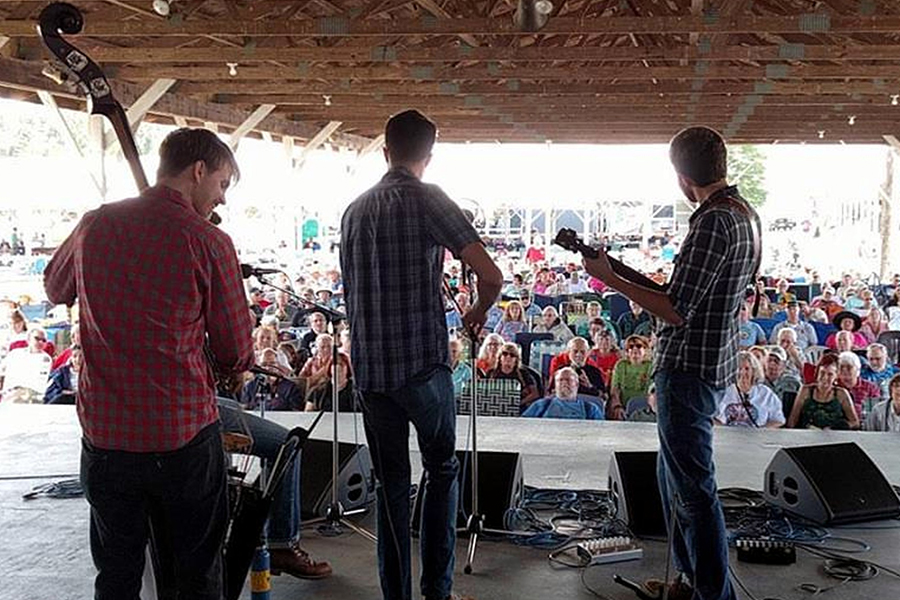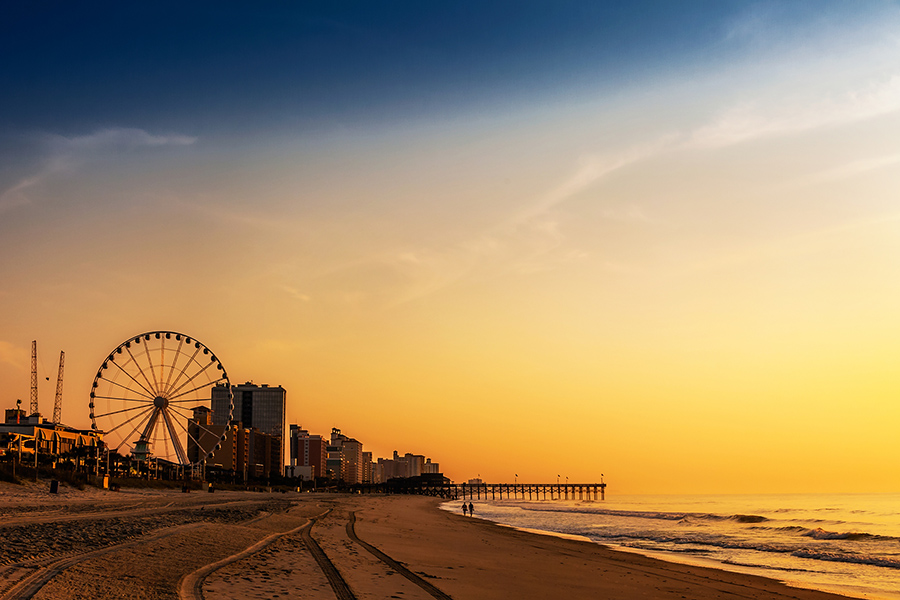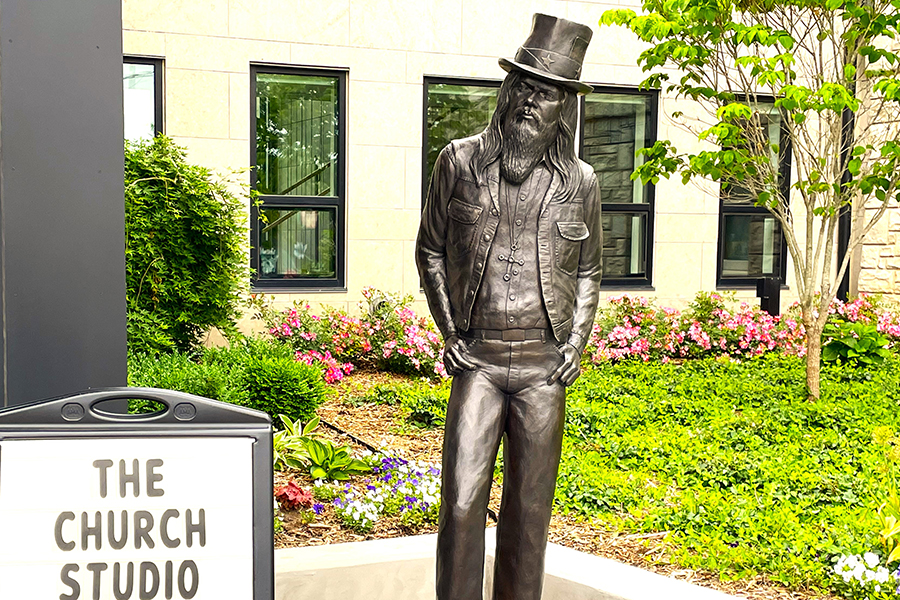He Brings the Best of Bluegrass to Salem County

It's a huge job, staging the annual Delaware Valley Bluegrass Festival, but you won't hear a sour note from Carl Goldstein.
He has done 45 of them. All music and harmony for him. And the 46th occurs Labor Day weekend -- Sept. 1 to 3 -- when the Salem County Fairgrounds in Woodstown welcomes a rural pilgrimmage of campers and day-trippers alike lured by the rousing music of fiddle, banjo and guitar, an American-roots experience that promises a foot-stomping good time.
Even Goldstein marvels at the mighty evolution of this bluegrass hootenanny. Rewind to 1972, the inaugural Labor Day weekend fest at a campground in Bear, Del., a modest happening still vivid to the festival director.
"It was a primitive site," he recalls. "We rented a stage from the city of Wilmington. It was just a rainy, awful weekend. A couple of hundred people came, but we had a remarkable array of talent."
Close to 7,500 people are likely to pass through the festival gates off Route 40 for this year's edition. It's a potpourri of fan events -- jam sessions, workshops, a children's stage -- and a mainstage presentation of 16 music acts, anchored this year by legendary player Del McCoury and Grammy-winning country band Asleep at the Wheel.
This is all about bluegrass love, not money. Goldstein doesn't make any. At 78, he hasn't missed a beat with this festival, a project he juggled even during his years as a judge in Delaware's court system, but he also shines the spotlight on a 14-member board of directors whose voluntary labors throughout the year are critical to organizing the $160,000 festival, a non-profit venture aided by corporate sponsors and an army of volunteers.
Bluegrass festivals have sprouted across the nation's landscape. It’s why Goldstein is proud that the International Bluegrass Music Association, an influencial industry group based in Nashville, anointed the Delaware Valley festival as its 2016 Music Event of the Year.
"That's quite an honor for us. I think we've built a good reputation," says Goldstein, whose search for a larger festival site led to Salem County in 1990. "There are several festivals around the country that are much larger -- Telluride in Colorado, and MerleFest (in North Carolina) -- but I think we're just below festivals like that."
The stature of this bluegrass bonanza is evident in the artists who sign on to play it. The list over the decades is long, yet it's noteworthy for the many A-listers, from late pioneers like Bill Monroe, Lester Flatt and Doc Watson, to such contemporary players as Ricky Skaggs, Patty Loveless and Alison Krauss, who have inspired bluegrass fans to find their way to Woodstown.
Goldstein's memory bank of great moments summons the name of Marty Stuart. The country star, now 58, was a child prodigy when Roland White, who'd played with Lester Flatt, invited the young guitarist to perform with his own group, Nashville Grass, at the Delaware fest.
"Marty Stuart played his very first bluegrass festival on our stage in 1972 . . . at age thirteen," Goldstein says. "He probably has played for us three times in the last ten years. He normally would charge about $30,000, but he charges us a lot less."
Bluegrass, like most musical forms, has undergone a synthesis -- and a great debate -- in recent years. There is still the steadfast band of purists who favor the old-time roots music steeped in the traditions of the Appalachian Mountains region, a musical style prominent in the 1920s and '30s, and the metamorphosis to bluegrass that followed.
For the most part, these loyalists spurn contemporary hybrids of bluegrass -- "newgrass" or "progressive bluegrass," as they're called. Broad interpretations rely on electric instruments, even rock influences and a jam-band feel. It has caught the ear of younger players and audiences.
But Goldstein is reluctant to jump on the bandwagon. Even if the festival grapples with the conundrum facing other decades-long folk events -- courting young music-lovers alongside the ranks of aging veterans -- he and his board feel obliged to uphold one inviolate tenet.
They built this festival on traditional bluegrass.
“Progressive bluegrass does help bring in a younger crowd," says Goldstein, who estimates the festival's core age group at 45 to 55, "but our concern is that we don't want to lose contact with our hardcore fans. Our interest is traditional bluegrass. We want variety that is compatible with bluegrass, such as other styles of country music."
This makes it logical to ask him about an intriguing band in the upcoming festival lineup. Their sound isn't bluegrass; it's New Orleans ragtime and Depression-era blues. No fiddles or mandolins for them; the musical foundation is built on a tuba, saxophone, trombone and clarinet.
Tuba Skinny?
"Yes, Tuba Skinny," Goldstein says, laughing. "We like to surprise people. I enjoy New Orleans music and I came across Tuba Skinny on YouTube. They're this street band from New Orleans. We had the festival lineup in place but I thought, 'We have to get them on the stage.' They've never played a bluegrass festival."
It highlights the winding country road traversed by this festival ever since Goldstein and two friends started the Brandywine Friends of Old Time Music in 1972. The organization exists today, preserving traditional American music, but back then it hosted a debut concert featuring bluegrass heavyweight Ralph Stanley -- a serendipitous show which gave birth to that first festival at the Delaware campground.
The banjo-picking pioneer and his friend Bill Monroe, hailed to this day as the "father of bluegrass," asked Goldstein and his Brandywine Friends to mount a regional festival. They forged a three-year partnership, until Stanley and Monroe cut ties with the festival to organize big bluegrass events in their home areas.
"They provided the talent, we provided the land, and they paid us a percentage. Going into the fourth year, they pulled out," Goldstein recalls. "Lester Flatt is the one who really saved us. He played in that fourth festival for a lot less money than he typically got for his performances."
Goldstein got close to Monroe -- as close as Monroe would allow. The mandolin virtuoso, days shy of his 85th birthday when he died in September 1996, felled by an earlier stroke, is revered as the creator of bluegrass in the 1940s, the country crooner whose Bluegrass Boys homogenized various old-time music influences into a breathless interplay of stringed instruments, tenor harmonies and fast tempos.
But Monroe’s long career of press clippings also painted him as unpredictable as his rapid chord changes. No-nonsense and perfectionist as a musician. And yet, as a person, alternately moody and kind, hurtful and caring, a cheap son of a gun and giving -- and a big womanizer.
"He was a strange character," Goldstein says. "He mostly kept to himself. He was very aloof. He was difficult to interview, though I never had to do that. I think a lot had to do with his background. He distrusted some folks -- he thought they were trying to make money off him. I almost became friends with him. I'm sure he was like most other people . . . once you got past the veneer, he seemed very down to earth."
(For festival information, visit www.delawarevalleybluegrass.org)






